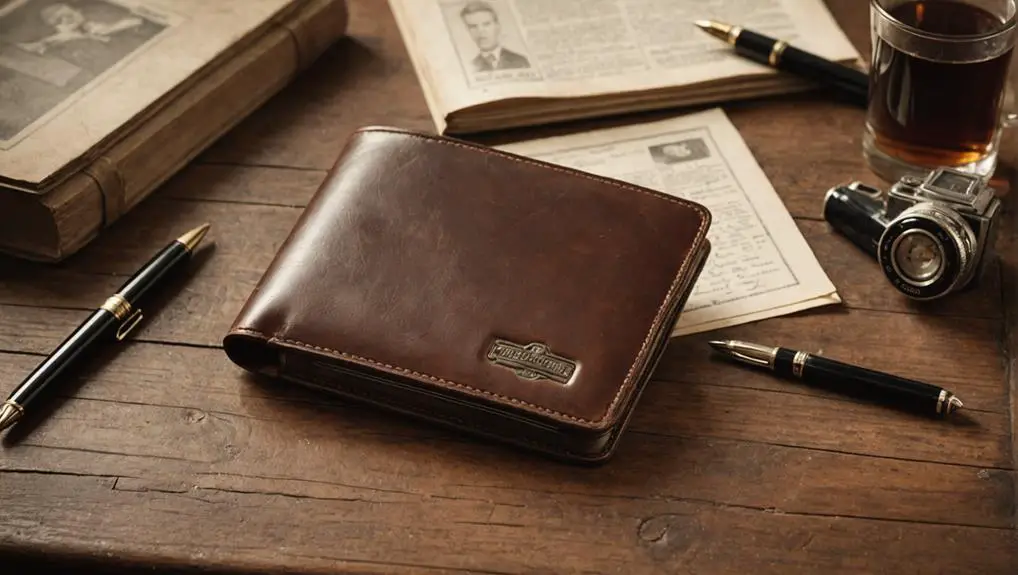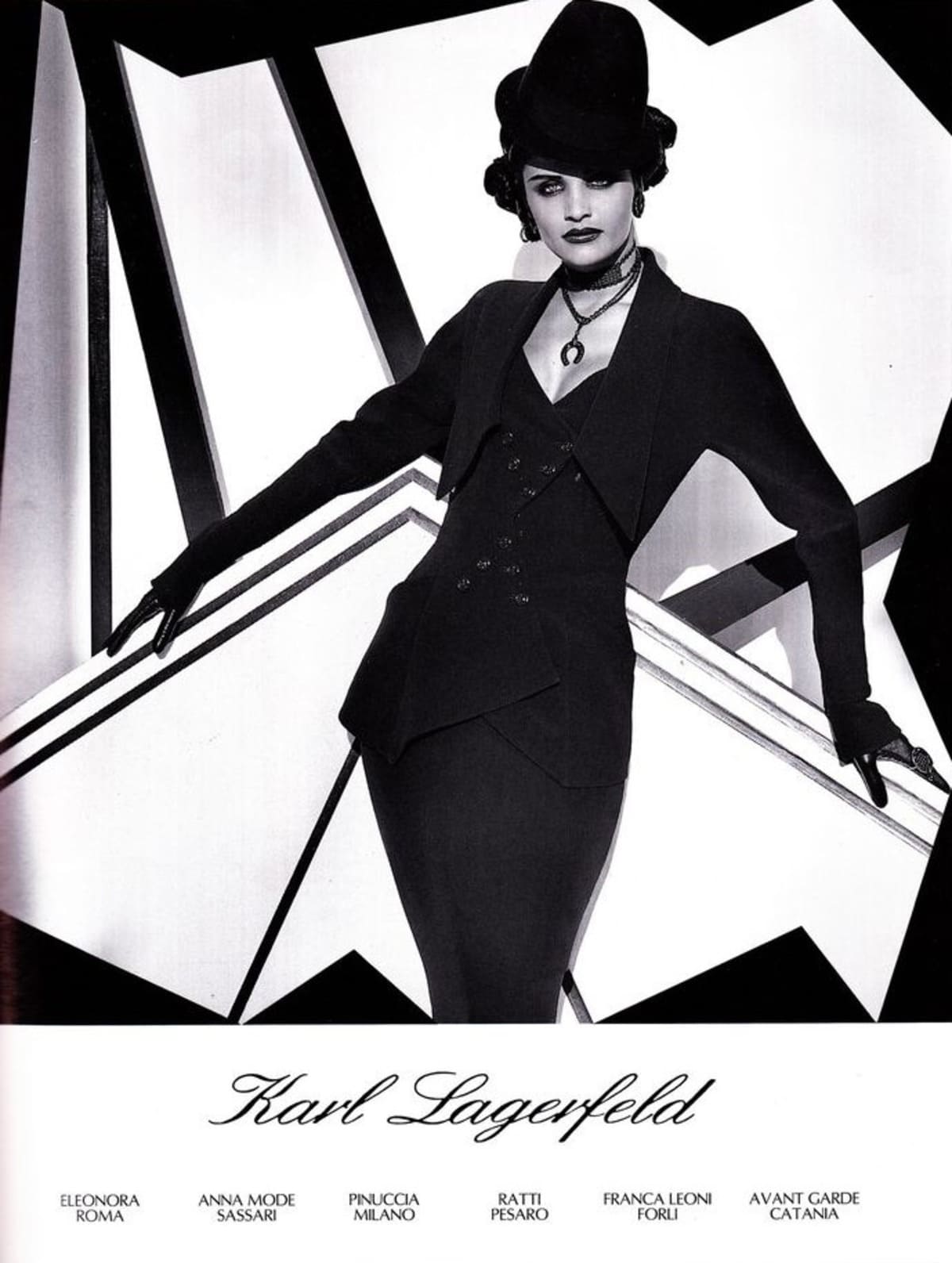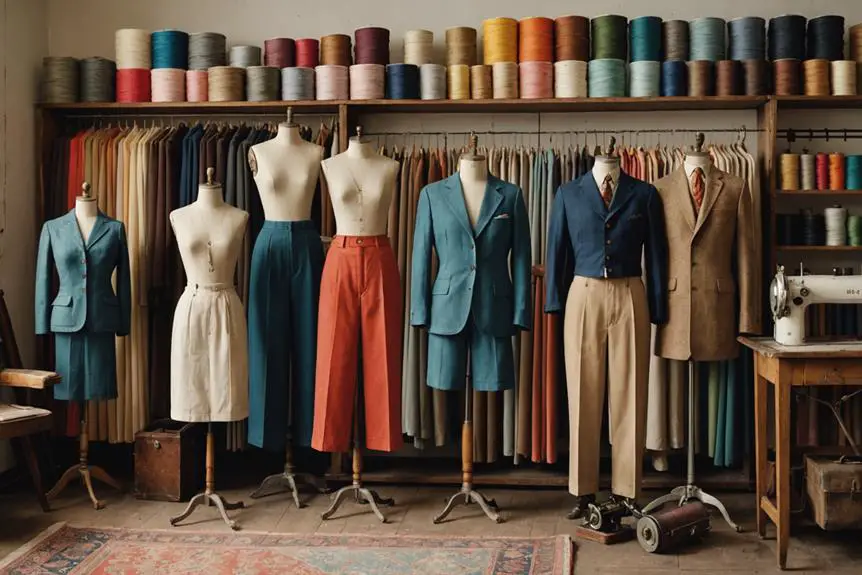In the 1940s, you'd find men's leather wallets that were both stylish and practical, taking cues from the post-war fashion landscape. These bifold and billfold designs, often made from durable cowhide leather, offered compartments for everything from military IDs to cash. Their compact size made them easy to carry, while embossed details added a touch of character. Prices varied, with simple styles starting around $17.99, appealing to many. As collectors focus on the craftsmanship of this era, the allure of these vintage pieces continues to grow, hinting at rich stories waiting to be uncovered.
Historical Context of Wallets
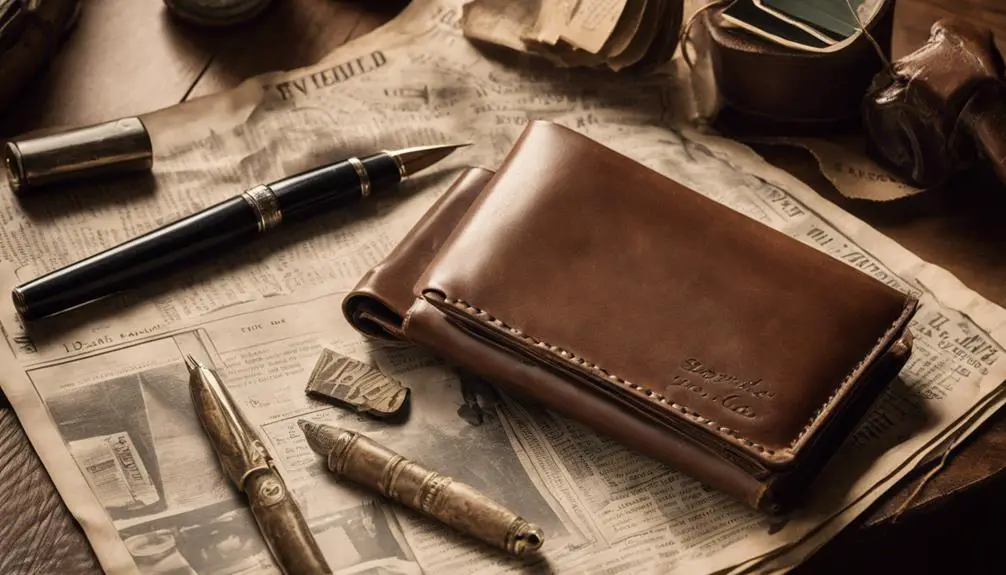
In the vibrant tapestry of fashion history, the 1940s stand out as a transformative decade for men's leather wallets. This era marked a significant evolution in design, reflecting the post-World War II landscape where practicality met style. You'd notice that leather wallets from this time were crafted from high-quality materials, often enhanced with unique embellishments like embossing, tooling, and decorative stitching that added character and flair.
The bi-fold design emerged as a favored choice, offering easy access to cash and cards while accommodating the changing needs of consumers. As servicemen returned home, these wallets catered specifically to them, many featuring compartments for military ID and currency—a nod to their life before civilian life. This shift was not just about aesthetics; it was a reflection of a society enthusiastic to embrace new beginnings.
With the post-war economic boom making leather goods more accessible, these vintage wallets became essential everyday accessories for men. They encapsulated a moment in time where functionality and style merged, illustrating how wallets evolved beyond mere utility to become symbols of identity and personal expression.
Common Wallet Designs
The evolution of men's leather wallets in the 1940s introduced a variety of designs that catered to the practical needs of the time. Among the most popular styles were bifold and billfold wallets, which became essential items for men seeking functionality and style. These wallets featured multiple compartments, making them perfect for organizing cash and cards efficiently.
Here are some common features of 1940s wallet designs:
- Expanding note pockets for easy access to cash
- Flapped compartments that secured important items
- Small pockets for coins or miscellaneous essentials
- Artisanal embellishments like embossed patterns and hand tooling
Typically measuring around 10 x 16.5 cm, these leather wallets offered a compact solution for carrying money and identification. The aesthetic of 1940s wallets often complemented military uniforms and civilian attire, allowing you to shift seamlessly from formal events to everyday outings. With their sturdy construction and refined designs, bifold and billfold wallets not only met the practical demands of the era but also reflected a sense of style that remains timeless today.
Materials Used in Production
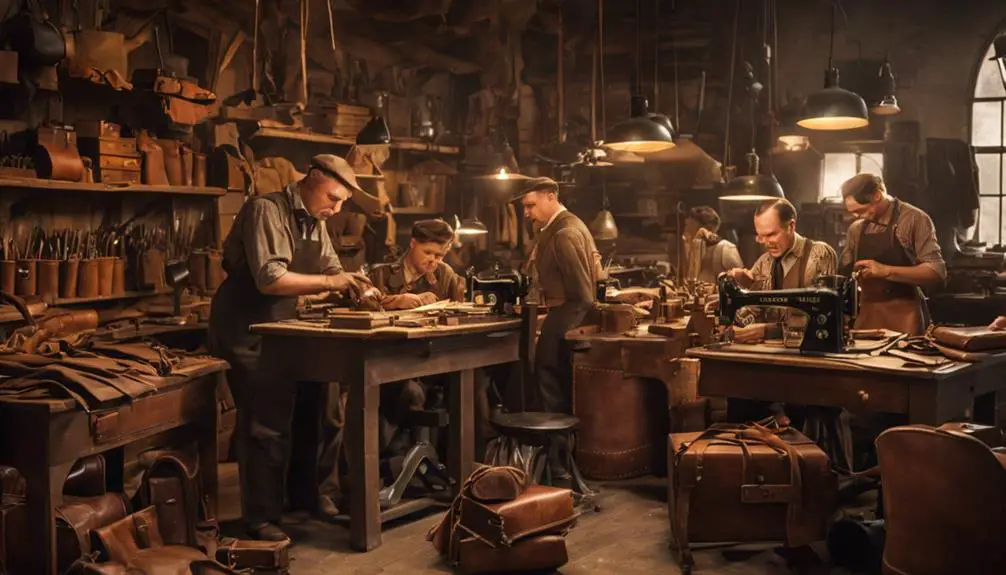
Crafted with a keen eye for detail, men's leather wallets from the 1940s showcased a premium selection of materials that emphasized both durability and style. The primary material was high-quality leather, specifically cowhide leather, known for its strength and luxurious feel. Additionally, embossed leather often adorned these wallets, featuring intricate design elements that highlighted the craftsmanship of the era.
These wallets weren't just functional; they were a statement of fashion. Many styles incorporated hand tooling and embossing, giving each piece a unique character. To further enhance their durability, the leather used was treated to withstand wear and tear, making these wallets perfect for everyday use. Some designs integrated metal clasps or fabric linings, adding an extra layer of functionality and aesthetic appeal.
| Material Type | Characteristics | Common Features |
|---|---|---|
| Cowhide Leather | Durable, smooth texture | Ideal for everyday use |
| Embossed Leather | Unique patterns, stylish design | Adds character and elegance |
| Additional Materials | Metal clasps, fabric linings | Enhances functionality |
Through these thoughtfully chosen materials, men's wallets of the 1940s reflect a dedication to quality and style.
Price Ranges and Availability
While exploring the world of men's leather wallets from the 1940s, you'll discover a fascinating range of prices that reflects both the craftsmanship and the materials used. Pricing for these wallets typically ranged from around $17.99 for simpler designs to $69.99 for more intricate pieces. This variety highlights not only the quality of the leather but also the skill involved in their creation.
Here's a glimpse into the pricing landscape:
- Simple designs: Starting at approximately $17.99, they offered affordability for everyday consumers.
- Handmade options: Unique pieces, like a wallet from Kano, Nigeria, could be found for as low as $19.50.
- Rare collectibles: Vintage wallets, such as the reptile print from Belgium, often reached up to $69.99.
- Negotiable listings: Many wallets featured "or Best Offer," allowing you to haggle based on your budget.
The limited availability of these vintage items, combined with their historical importance, often leads to increased demand. As you navigate the pricing of leather wallets, remember that the craftsmanship and rarity can greatly influence what you might pay.
Collector's Insights
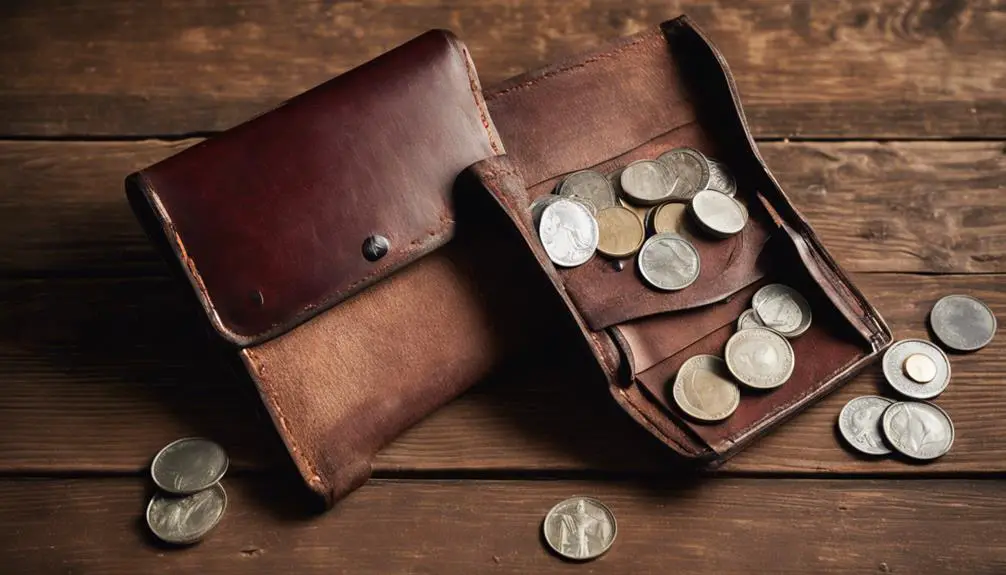
As you explore the domain of men's leather wallets, you'll find that collectors are particularly drawn to the unique characteristics that define pieces from the 1940s. This era saw the rise of the bifold leather wallet, expertly designed with multiple compartments to cater to the practical needs of a society evolving from wartime to peacetime.
You'll notice that many wallets from this period are crafted from high-quality brown leather, often showcasing exquisite embellishments like embossed patterns and hand-tooled details. These features highlight the exceptional craftsmanship of the time and add to their allure for collectors.
Among the most sought-after styles are the reptile print wallets from Belgium, which have gained popularity due to their rarity and historical significance. Prices for these vintage treasures can soar upwards of $69.99, reflecting their value in the collector's market.
Investing in a 1940s leather wallet isn't just about owning a functional accessory; it's about owning a piece of history. These wallets provide insights into the consumer habits and social norms of the era, making them fascinating artifacts to cherish and collect.
Care and Maintenance Tips
Taking proper care of your men's leather wallet can greatly extend its lifespan and maintain its aesthetic appeal. A well-maintained Leather Wallet w can be a timeless accessory, especially when you consider the value of leather money, which often increases with age. Here are some essential care and maintenance tips to keep your wallet in top shape:
- Regular Cleaning: Use a damp cloth to wipe away dirt and dust. Let your wallet air dry naturally to prevent moisture damage.
- Conditioning: Apply a high-quality leather conditioner every 3-6 months. This keeps the leather supple and prevents cracking, particularly for wallets made from cowhide or morocco.
- Proper Storage: Store your wallet in a cool, dry place, away from direct sunlight. Consider using a dust bag or box to shield it from dust and scratches.
- Periodic Inspection: Check for signs of wear, like loose stitching or damaged clasps. Addressing these issues promptly preserves the wallet's integrity and value.
Modern Influence and Trends
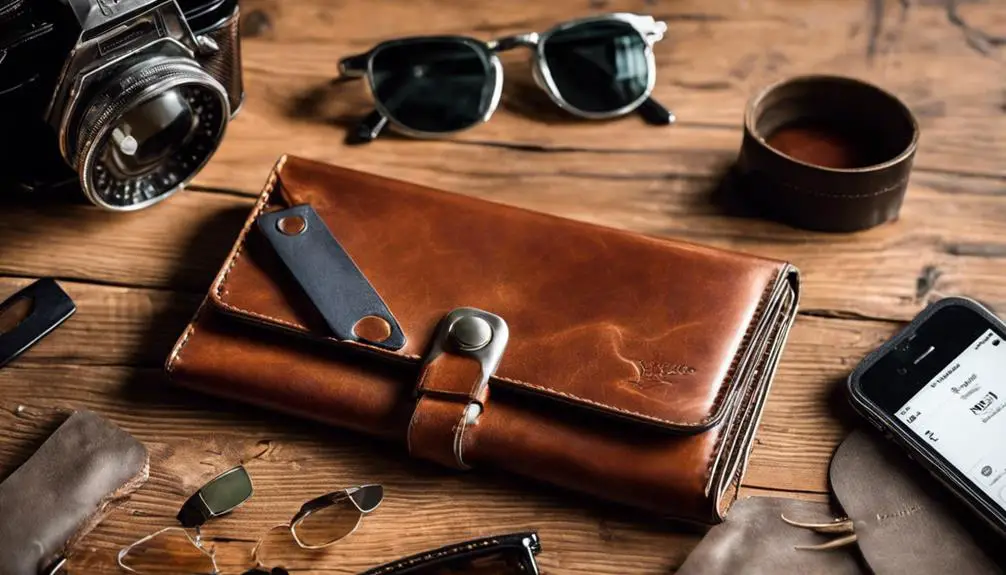
The modern landscape of men's leather wallets is a fascinating blend of classic craftsmanship and innovative design, reflecting a resurgence of vintage influences and contemporary needs. You'll find that many styles today, particularly the leather wallet bifold, echo the essential design elements from the 1940s, emphasizing both functionality and aesthetics. These wallets often feature dedicated coin purses and compartments to keep your money organized, marrying practicality with timeless elegance. The identification of vintage wallets can involve examining stitching and materials, as well as understanding the historical context of brands, which enhances their appeal to collectors and enthusiasts vintage clothing trends reminiscent of mid-20th century fashion.
The appeal of vintage wallets has reached new heights, thanks to collectors and fashion enthusiasts who appreciate the unique craftsmanship and nostalgic designs reminiscent of mid-20th century fashion. Social media platforms have played a pivotal role in this trend, igniting interest in authentic vintage pieces and elevating the demand for retro styles in today's market.
Moreover, modern wallets are often enhanced with RFID-blocking technology to safeguard your personal information, catering to evolving consumer needs. Yet, they still draw inspiration from the durable materials and artisanal techniques that were hallmarks of the 1940s. This harmonious blend of old and new guarantees that your leather wallet not only serves its purpose but also stands as a statement piece.
Frequently Asked Questions
When Was the Leather Wallet Invented?
The leather wallet's origins trace back centuries, evolving from simple pouches to more sophisticated designs. By the mid-20th century, wallets began incorporating style and practicality, reflecting changing trends in fashion and personal expression.
Did Men Carry Wallets in the 1800s?
Yes, men carried wallets in the 1800s. These simple pouches held coins and important documents, reflecting the era's economic shift. Handcrafted from leather or fabric, they showcased artisan skills with decorative stitching and embossing.
What Leather Are Wallets Made From?
Wallets are typically made from durable cowhide leather, luxurious morocco leather, or exotic reptile skins. Each type offers unique textures and styles, ensuring your choice reflects personal taste while providing lasting quality and elegance.
